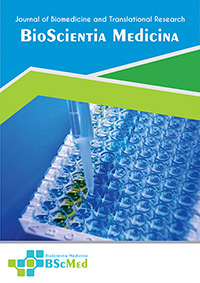Main Article Content
Abstract
Background: Hypertrophic cardiomyopathy (HCM) is a genetic disorder characterized by myocardial hypercontractility. Mavacamten and aficamten are first-in-class cardiac myosin inhibitors that have demonstrated efficacy in treating obstructive HCM. However, in the absence of direct head-to-head randomized controlled trials (RCTs), their comparative effectiveness and safety remain unquantified. We aimed to indirectly compare the efficacy and safety of mavacamten and aficamten in patients with obstructive HCM.
Methods: We conducted a systematic review and Bayesian network meta-analysis of RCTs. We searched PubMed, EMBASE, and the Cochrane Central Register of Controlled Trials from inception to December 2024. Eligible studies were RCTs comparing mavacamten or aficamten with placebo in adults with obstructive HCM. The primary efficacy outcomes were the change from baseline in post-exercise left ventricular outflow tract (LVOT) gradient and the change in peak oxygen consumption (pVO₂). The primary safety outcome was the incidence of left ventricular ejection fraction (LVEF) reduction to <50%.
Results: Seven RCTs involving 1,025 patients were included. In the network meta-analysis, both aficamten (Mean Difference [MD], -50.8 mmHg; 95% Credible Interval [CrI], -61.2 to -40.4) and mavacamten (MD, -44.9 mmHg; 95% CrI, -53.7 to -36.1) were significantly more effective than placebo in reducing post-exercise LVOT gradient. The indirect comparison between the two agents did not reveal a statistically significant difference (MD, -5.9 mmHg; 95% CrI, -17.8 to 6.0). For pVO₂, both mavacamten and aficamten showed significant improvement over placebo, with no significant difference between them. The odds of LVEF dropping below 50% were numerically higher with mavacamten compared to aficamten, but the difference was not statistically significant (Odds Ratio [OR], 1.52; 95% CrI, 0.65 to 3.54).
Conclusion: Mavacamten and aficamten are both highly effective in improving hemodynamic and functional parameters in patients with obstructive HCM. While our indirect comparison did not establish the superiority of one agent over the other, it provides foundational evidence for clinicians. Definitive conclusions await direct head-to-head clinical trials.
Keywords
Article Details
As our aim is to disseminate original research article, hence the publishing right is a necessary one. The publishing right is needed in order to reach the agreement between the author and publisher. As the journal is fully open access, the authors will sign an exclusive license agreement.
The authors have the right to:
- Share their article in the same ways permitted to third parties under the relevant user license.
- Retain copyright, patent, trademark and other intellectual property rights including research data.
- Proper attribution and credit for the published work.
For the open access article, the publisher is granted to the following right.
- The non-exclusive right to publish the article and grant right to others.
- For the published article, the publisher applied for the Creative Commons Attribution-NonCommercial-ShareAlike 4.0 International License.





